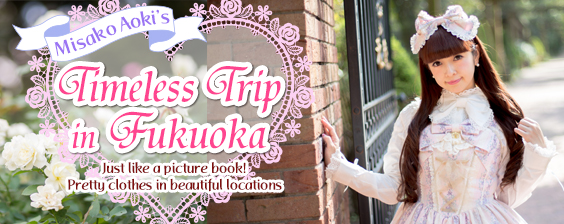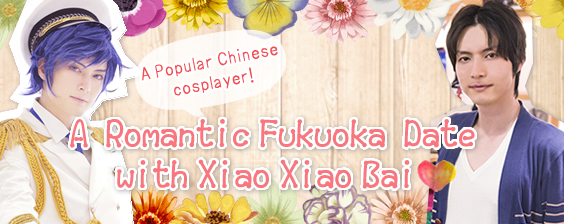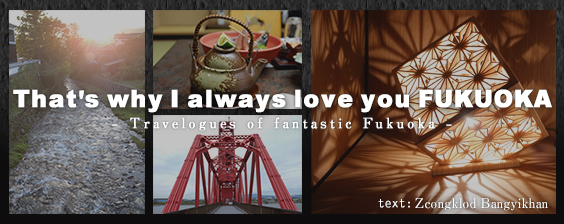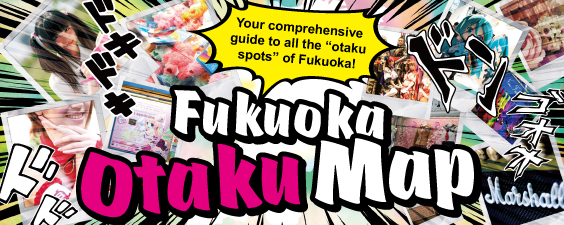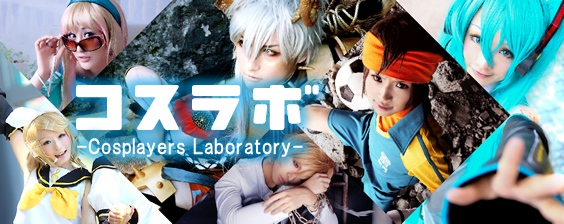- Home
- Ayaka Wada(ANGERME) presents "...
- Ayaka Wada(S/mileage) presents...
Ayaka Wada(S/mileage) presents "Ukiyo-e" Vol.01 Harunobu Suzuki "Couple Under Umbrella in the Snow"
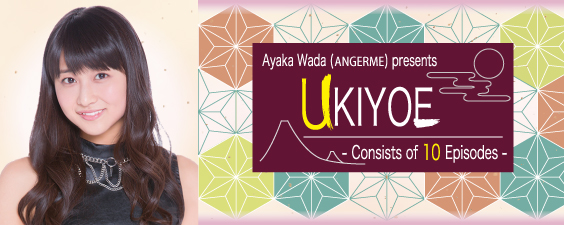
The People of Edo were Otaku!?
Harunobu Suzuki was the first superstar of the ukiyo-e technique known as nishiki-e.
Nishiki-e developed through advances in polychrome woodblock printing techniques and is a style of ukiyo-e that layers multiple colors on top of each other.
Nishiki-e developed through advances in polychrome woodblock printing techniques and is a style of ukiyo-e that layers multiple colors on top of each other.
Not matter what field, whenever something new begins there’s always a hero or heroine who appears alongside it. The hero, who lit up the scene that was colorful nishiki-e woodblock printing, was Harunobu Suzuki. I’m sure ukiyo-e fans at the time would have been thrilled with the appearance of such a superstar on the scene.
New techniques and styles can be developed, but if there’s no demand for it and no one buys it, those advances can only go so far. But that wasn’t a problem for the people of Edo. There were so many ukiyo-e fans during this period; they were just waiting for such technical innovation to come along. It was quite popular at the time for rich people to hold gatherings to exchange egoyomi picture calendars, and it was these exchange parties that became the catalysts for the birth of the nishiki-e style.
I want even more beautiful egoyomi; ones with more color!
And so the desires of the wealthy Edo-ites prompted the development of nishiki-e.
New techniques and styles can be developed, but if there’s no demand for it and no one buys it, those advances can only go so far. But that wasn’t a problem for the people of Edo. There were so many ukiyo-e fans during this period; they were just waiting for such technical innovation to come along. It was quite popular at the time for rich people to hold gatherings to exchange egoyomi picture calendars, and it was these exchange parties that became the catalysts for the birth of the nishiki-e style.
I want even more beautiful egoyomi; ones with more color!
And so the desires of the wealthy Edo-ites prompted the development of nishiki-e.

In modern day terms it’s probably not that unlike trading cards, or the way idol fans exchange idols’ photos with each other. It seems even the Japanese of the Edo period were admirable otaku. Which makes Edo all the more easier to relate to, too. Japan was quite possibly the most artistically advanced country in the world at the time. But the people of Edo were unaware of this – for them it was just a part of regular life. Although, it’s likely that it was for the very fact that the country was sealed off to the outside world that such an environment could be cultivated.
When thinking about the Edo period there’s a tendency to focus only on the more significant events like the Sengkoku (Warring States) period (approx. 1457-1568) and the Azuchi-Momoyama period (1583-1600) that immediately preceded it, and the end of the Tokugawa shogunate (and thus Edo period), but it was in this period that the people of Edo first began to seek pleasurable lives and this is no more evident than in ukiyo-e. In this period, even the original word “ukiyo,” comprised of the Chinese characters “uki” (suffering) and “yo” (world) was replaced with “uki” (floating) and “yo” (world) to take the complete opposite meaning of it’s original usage and convey the idea of a “floating world.”
If the people weren’t floating around feeling exhilarated I don’t think they would have noticed all of the pleasures out there. If you did that during the Sengoku period you probably would have been cut down in an instant. Harunobu Suzuki was most active in the Meiwa era (1764-1772) of the Edo period, when this buoyant attitude towards life was so prevalent throughout society that even regular people could enjoy paintings.
When thinking about the Edo period there’s a tendency to focus only on the more significant events like the Sengkoku (Warring States) period (approx. 1457-1568) and the Azuchi-Momoyama period (1583-1600) that immediately preceded it, and the end of the Tokugawa shogunate (and thus Edo period), but it was in this period that the people of Edo first began to seek pleasurable lives and this is no more evident than in ukiyo-e. In this period, even the original word “ukiyo,” comprised of the Chinese characters “uki” (suffering) and “yo” (world) was replaced with “uki” (floating) and “yo” (world) to take the complete opposite meaning of it’s original usage and convey the idea of a “floating world.”
If the people weren’t floating around feeling exhilarated I don’t think they would have noticed all of the pleasures out there. If you did that during the Sengoku period you probably would have been cut down in an instant. Harunobu Suzuki was most active in the Meiwa era (1764-1772) of the Edo period, when this buoyant attitude towards life was so prevalent throughout society that even regular people could enjoy paintings.
Using Asperity to Depict Kimono patterns
When I saw “Couple Under Umbrella in the Snow,” the thing that stood out most to me was the asperity of the painting. It was a real surprise to me to see the real thing and discover that white-colored paint wasn’t used to depict the build up of snow on top of the umbrella, but rather, the asperity and roughness of the surface of the woodblock itself.
The pattern of the kimono too was portrayed using the roughness of the wood and not color. This is a technique called “karazuri” or “empty printing” (printing without using paint).
Using only the asperity of the wood it creates a gentle tone and emphasizes the fragility of the work, so I think it works perfectly to depict the beauty of the woman’s white kimono. I think you would lose that sense of fragility if you were to draw the pattern on by hand. It feels more like the picture has been “made” rather than “painted.” But that’s the beauty of the ukiyo-e woodblock print. These techniques have developed by taking advantage of its properties as a woodblock. Ukiyo-e prints are composed through a division of labor. It involves a team of three craftsmen: the “eshi” who does the drawings, the “horishi,” in charge of the engraving, and the “surishi,” in charge of the pressing.
Of course Harunobu Suzuki was the eshi for “Couple Under Umbrella in the Snow,” but the fact that Harunobu wasn’t the only one involved in the work is what’s so great about it. I wonder if he didn’t worry that it wouldn’t turn out the way he imagined. He put together a very reliable team, no doubt. It’s incredible enough that the genius Harunobu Suzuki drew the work, but then this dynamite team work together to create something that’s even more impressive still. Ukiyo-e is like a consolidation of all professional skills and techniques!
The pattern of the kimono too was portrayed using the roughness of the wood and not color. This is a technique called “karazuri” or “empty printing” (printing without using paint).
Using only the asperity of the wood it creates a gentle tone and emphasizes the fragility of the work, so I think it works perfectly to depict the beauty of the woman’s white kimono. I think you would lose that sense of fragility if you were to draw the pattern on by hand. It feels more like the picture has been “made” rather than “painted.” But that’s the beauty of the ukiyo-e woodblock print. These techniques have developed by taking advantage of its properties as a woodblock. Ukiyo-e prints are composed through a division of labor. It involves a team of three craftsmen: the “eshi” who does the drawings, the “horishi,” in charge of the engraving, and the “surishi,” in charge of the pressing.
Of course Harunobu Suzuki was the eshi for “Couple Under Umbrella in the Snow,” but the fact that Harunobu wasn’t the only one involved in the work is what’s so great about it. I wonder if he didn’t worry that it wouldn’t turn out the way he imagined. He put together a very reliable team, no doubt. It’s incredible enough that the genius Harunobu Suzuki drew the work, but then this dynamite team work together to create something that’s even more impressive still. Ukiyo-e is like a consolidation of all professional skills and techniques!
The Couple’s Story
When you compare “Couple Under Umbrella in Snow” to some of Harunobu’s other works, there are a few curious elements that stand out. There is snow built up on top of the umbrella, but if you look at the couple’s feet, there doesn’t seem to be any snow on the ground. Apart from the tree on the right hand side, there isn’t anything else depicted in the background. Don’t you think this makes it look like the couple is walking on top of the clouds? Also, compared to the delicacy of the couple’s kimono, the tree is depicted in a rather rough way. It’s almost like it doesn’t matter – so long as you can tell it’s a tree. Perhaps by only drawing the tree in such a rough way Harunobu wanted to create a feeling of mystery.
If the tree was drawn in detail, he probably would have had to draw the rest of the scenery surrounding the tree as well. If he didn’t depict any scenery at all, the picture would become a mere portrait of the couple. So he probably drew the tree to get the people who observe the work to focus on the story of the couple and imagine what their story could be.
They even shared umbrella’s back then in Edo, too!
I’m sure that’s the first thing that people think when they see this picture.
I think the umbrella belongs to the woman. The pattern on the umbrella is a bit feminine for one, and I think women are more likely to care about the weather. Perhaps this is the woman’s dream. In a dream you can walk on top of the clouds. Maybe she dreams about walking alongside the man she loves, sharing an umbrella.
I’m sure the people of Edo imagined various stories about the couple just like this when they gazed upon the picture, too.
If the tree was drawn in detail, he probably would have had to draw the rest of the scenery surrounding the tree as well. If he didn’t depict any scenery at all, the picture would become a mere portrait of the couple. So he probably drew the tree to get the people who observe the work to focus on the story of the couple and imagine what their story could be.
They even shared umbrella’s back then in Edo, too!
I’m sure that’s the first thing that people think when they see this picture.
I think the umbrella belongs to the woman. The pattern on the umbrella is a bit feminine for one, and I think women are more likely to care about the weather. Perhaps this is the woman’s dream. In a dream you can walk on top of the clouds. Maybe she dreams about walking alongside the man she loves, sharing an umbrella.
I’m sure the people of Edo imagined various stories about the couple just like this when they gazed upon the picture, too.
Related Articles
 Ayaka Wada(ANGERME) presents "Ukiyo-e" Vol.01 Harunobu Suzuki "Couple Under Umbrella in the Snow"
Ayaka Wada(ANGERME) presents "Ukiyo-e" Vol.01 Harunobu Suzuki "Couple Under Umbrella in the Snow"Harunobu Suzuki was the first superstar of the ukiyo-e technique known as nishiki-e.
Nishiki-e developed through advances in polychrome woodblock printing techniques and is a style of ukiyo-e that layers multiple colors on top of each other.
 Ayaka Wada(ANGERME) presents "Ukiyo-e" Vol.05 Toshusai Sharaku "Actor Otani Oniji 3rd as the yakko Edobei"
Ayaka Wada(ANGERME) presents "Ukiyo-e" Vol.05 Toshusai Sharaku "Actor Otani Oniji 3rd as the yakko Edobei"Have you ever looked over a painting by a famous artist on display at an art gallery or art exhibition and found yourself wondering this? Do we look at these paintings with such appreciation because the artist is famous and has received praise from people around the world? Famous paintings are famous because society and all the textbooks and guidebooks tell us so.
 Ayaka Wada (ANGERME) presents "Ukiyo-e" Vol.10 Eizan Kikugawa "Fashionable Decorations for the Five Seasonal Festivals: Iris Festival"
Ayaka Wada (ANGERME) presents "Ukiyo-e" Vol.10 Eizan Kikugawa "Fashionable Decorations for the Five Seasonal Festivals: Iris Festival"After almost a year of its serialization, we’ve now reached the final installment in the “Ukiyo-e” series. I’ve seen all various kinds of ukiyo-e prints over this year, and for me, Edo has become a period in history that I can now really relate to.
 Interview with Ayaka Wada to Celebrate the Launch of her New Book, “Rediscovering Japan Through Art” (ODYSSEY BOOKS INC.) – Ayaka Wada (ANGERME) X Takamasa Sakurai (Producer)
Interview with Ayaka Wada to Celebrate the Launch of her New Book, “Rediscovering Japan Through Art” (ODYSSEY BOOKS INC.) – Ayaka Wada (ANGERME) X Takamasa Sakurai (Producer)Following on from her 2014 publication that shed a fresh new light on the fine art book industry, “Otome no Kaiga Annai” (PHP Shinsho), on the 12th of March 2016, ANGERME idol group leader, Ayaka Wada, will release her second book, entitled, “Bijutsu de Meguru Nippon Saihakken ~ Ukiyoe, Nippon-ga kara Butsuzou made” (Rediscovering Japan Through Art: From Ukiyo-e and Japanese Paintings, to Buddhist Sculptures) (ODUSSEY BOOKS INC.).
Columnist: Ayaka Wada (ANGERME)
 Ayaka’s looks and style have seen her grace the covers of multiple magazines and gravure publications. She likes art and Western paintings, particularly the works of Rembrandt and Édouard Manet. She studies art history at university and has recently developed an interest in Japanese Buddhist sculptures and paintings. She even has her own “shuincho” (seal stamp book) and is currently collecting stamps from all the temples she visits around Japan. Ayaka discusses paintings in her monthly serialization, she is the author of the book “Otome no Kaiga Annai” (Maiden’s Guide to Paintings), and she also performs with Riho Sayashi (Morning Musume。 ) in the two-girl unit, Peaberry, which was formed alongside the SATOYAMA movement: a movement which has also begun expanding their activities to include art field as well.
Ayaka’s looks and style have seen her grace the covers of multiple magazines and gravure publications. She likes art and Western paintings, particularly the works of Rembrandt and Édouard Manet. She studies art history at university and has recently developed an interest in Japanese Buddhist sculptures and paintings. She even has her own “shuincho” (seal stamp book) and is currently collecting stamps from all the temples she visits around Japan. Ayaka discusses paintings in her monthly serialization, she is the author of the book “Otome no Kaiga Annai” (Maiden’s Guide to Paintings), and she also performs with Riho Sayashi (Morning Musume。 ) in the two-girl unit, Peaberry, which was formed alongside the SATOYAMA movement: a movement which has also begun expanding their activities to include art field as well.Author of: "Otome no kaiga annai"
http://shuchi.php.co.jp/article/1846
This comment section is for readers to leave opinions and comments. Inappropriate comments may be deleted, so please remember to be respectful. Thank you!
 Measures and provisions are being taken at various locations in an effort to prevent the spread of the new coronavirus.
Measures and provisions are being taken at various locations in an effort to prevent the spread of the new coronavirus.




